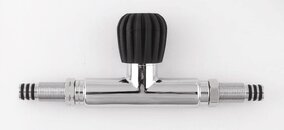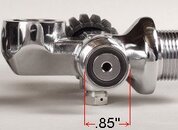mahjong
Contributor
Can anyone explain the benefits of a captured O-ring manifold over the rotating crossbar manifold. Looking at the OMS website, for example, they offer both. The two manifold's look identical in function, with one exception: the rotating crossbar manifold centerline is adjustable, from 209mm - 222mm, whereas the captured O-ring manfold centerline is fixed at 215mm. I cannot seem to find another difference between these two manifolds, so why have the captured O-ring manifold? Is it a less expensive alternative when you know with certainty what your centerline is?
OMS SCUBA Valves & Manifolds http://www.OMSdive.com
OMS SCUBA Valves & Manifolds http://www.OMSdive.com







